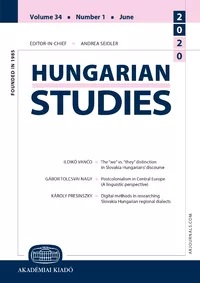Non-living naturalia in Clusius's correspondence, Part II. Minerals, strange stones, fossils and earths as objects of exchange in the respublica litteraria around Clusius
Non-living naturalia in Clusius's correspondence, Part II. Minerals, strange stones, fossils and earths as objects of exchange in the respublica litteraria around Clusius
Author(s): Áron OrbánSubject(s): Cultural history
Published by: Akadémiai Kiadó
Keywords: Carolus Clusius; metals; fossils; mining; mineralogy; geology; palaeontology; respublica litteraria; humanism; Early Modern medicine; medicinal earth
Summary/Abstract: Carolus Clusius (Charles de l’Écluse, 1526–1609), one of the most renowned naturalists of sixteenth-century Europe, was a versatile man of letters. One of his fields of interest neglected in scholarship is his attitude and activities around what was called fossilia at that time, and what can today be called non-living naturalia: metals, gems, various strange “stones”, fossils or medicinal earths. Such naturalia appear several times in his correspondence. This two-part study reviews how Clusius took part in the collecting, exchange and discussions about these inorganic objects in the European respublica litteraria. He could even be involved in geological or palaeontological issues of his age. The investigation not only throws light on the activities of Clusius and some of his correspondents, but also taps into the broader topic of communication and exchange in the Literary Republic of the time, and may even contribute to the history of the natural sciences in the period. Some of the non-living naturalia Clusius was interested in (like “Saint Ladislaus's coin” or the medicinal earth of Tokaj) could be found in Hungary and he looked for them by way of friends in that region (it is known that one of his most important patrons was the Hungarian aristocrat Boldizsár Batthyány). For reasons of space, the present study has been published in two parts: Sections 1–3 appeared in the previous issue, while Sections 4–7 are published in this one. A map to the entire study is included at the end of the present part.
- Issue Year: 37/2023
- Issue No: Spec.Issue
- Page Range: 32-41
- Page Count: 40
- Language: English

